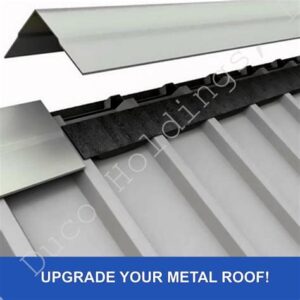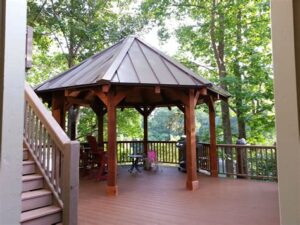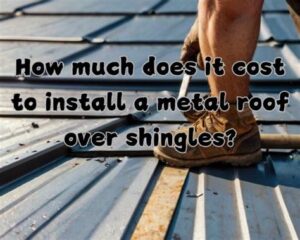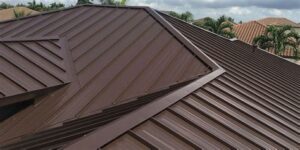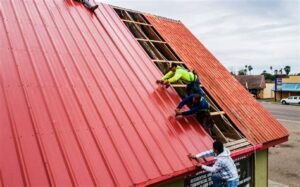When considering a roofing solution that combines durability, aesthetic appeal, and long-term savings, metal roof shingles stand out as an excellent choice. However, understanding the cost and maintenance associated with these roofing materials is crucial for making an informed decision. In this article, we will delve into the various factors that influence metal roof shingles costs and installation expenses, as well as explore the advantages of investing in this resilient roofing option. Additionally, we’ll discuss essential care tips to ensure the longevity of your metal roof and compare it to other roofing alternatives, helping you determine the best fit for your home. Whether you’re a homeowner planning a renovation or simply curious about roofing options, everything you need to know about metal roof shingles cost and maintenance is covered here.
Understanding Metal Roof Shingles Cost Factors
When considering a roofing project, it’s essential to understand the various cost factors associated with everything you need to install metal roof shingles. Here are the key elements that can influence the overall cost:
- Materials: The type of metal used (steel, aluminum, copper, or zinc) significantly affects pricing. Steel shingles are generally the most budget-friendly option, while copper and zinc are on the higher end of the spectrum.
- Thickness: Thicker metal shingles tend to be more durable and therefore, often come at increased costs. Investing in thicker materials may yield long-term savings due to reduced maintenance needs.
- Style and Finish: Metal roof shingles come in various styles and finishes, including painted and coated options. Custom designs or specialty finishes can significantly add to the cost.
- Labor Costs: Installation labor costs can vary based on geographic location, the complexity of the roof, and the contractor’s expertise. If you hire experienced professionals, expect to pay a premium for quality workmanship.
- Roof Size and Complexity: Larger roofs with multiple levels or unique shapes may incur higher labor and material expenses. The overall square footage directly impacts the total cost.
- Accessibility: The ease of access to the roof can also influence costs. If special equipment or additional safety measures are needed, this can add to the labor costs.
- Removal of Old Roof: If you need to remove an existing roof before installation, this will drive up the project costs. Be sure to budget for disposal and any possible repairs to the underlying structure.
- Permits and Inspections: Local regulations may require specific permits and inspections, which can also raise costs. Always check with local authorities for any additional expenses.
By carefully considering and budgeting for these cost factors, homeowners can have a clearer picture of what to expect when installing metal roof shingles, ensuring their investment pays off in the long run.
Everything You Need To Know About Installation Expenses
When considering a metal roof for your home, understanding the installation expenses is crucial. The cost of installation can vary significantly based on various factors, including the type of metal you choose, the complexity of your roof design, and the labor costs of contractors in your area. Here are the key aspects to consider:
- Type of Metal: Different metals, such as steel, aluminum, and copper, come with different price tags. Generally, aluminum and copper tend to be more expensive than steel.
- Roof Complexity: If your roof has multiple pitches, valleys, or unique features, installation will be more labor-intensive and thus more expensive.
- Existing Roof Condition: If you need to remove an old roof or make repairs before installation, this will add to your overall costs.
- Labor Costs: Hiring professional installers is often necessary for a proper installation. Labor costs can vary regionally and should be factored into your budget.
- Geographical Location: Prices can also fluctuate based on your location, as some areas may have higher demand for roofing services.
As a ballpark estimate, the installation costs for metal roofing typically range from $5 to $12 per square foot, depending on the factors mentioned above. It’s advisable to obtain several quotes from different contractors to find the best deal and ensure that you are getting quality workmanship.
Understanding the installation expenses is essential to making an informed decision about your roofing project. By being aware of the various cost factors involved, you’ll be better prepared to budget for a metal roof that not only enhances your home’s appearance but also adds value in the long term.
Long-Term Savings Through Metal Roof Maintenance
Investing in metal roof shingles is a wise decision not just for immediate protection but also for long-term savings. The durability and resilience of metal roofs significantly reduce maintenance needs compared to traditional roofing materials. However, proactive and regular maintenance can magnify these savings.
Proper maintenance can extend the lifespan of your metal roof to 40 years or more, eliminating the need for costly replacements. Here are some key aspects to consider:
| Maintenance Task | Frequency | Estimated Cost | Potential Savings |
|---|---|---|---|
| Debris Removal | Annually | $100 | Increased lifespan by 5-10 years |
| Inspect for Rust or Damage | Bi-annually | $50 | Prevent costly repairs |
| Check Seals and Fasteners | Annually | $75 | Prevent water leaks and interior damage |
By adhering to these maintenance practices, homeowners can reap substantial savings over the life of their metal roof. Regular inspections and timely repairs can prevent issues that could lead to significant expenses down the line.
Additionally, maintaining your metal roof may enhance energy efficiency, ultimately reducing heating and cooling costs. A well-maintained roof reflects sunlight effectively, which can result in a cooler home during summer months.
everything you need for maximizing your investment in metal roof shingles comes down to understanding the importance of maintenance. By actively caring for your roof, you will not only enjoy its aesthetic appeal but also secure long-term financial benefits.
Comparing Metal Roof Shingles To Other Roofing Options
When considering roofing materials, homeowners often find themselves weighing their options, including metal roof shingles, asphalt shingles, tile, and wood shakes. Each material comes with its own set of advantages and disadvantages that can significantly impact both the initial investment and long-term performance.
Everything You need to know about metal roof shingles is that they are renowned for their durability and longevity. Unlike traditional asphalt shingles, which typically last around 15 to 30 years, metal roof shingles can endure for 50 years or more when properly maintained. This longevity can lead to significant savings over time, making metal an appealing choice for many homeowners.
In terms of energy efficiency, metal roofs reflect solar radiant heat, which can reduce cooling costs in warmer climates. In contrast, asphalt shingles tend to absorb heat, increasing air conditioning expenses during hot summer months. Additionally, metal roofs are often made from recycled materials, providing a more sustainable option compared to asphalt and wood, which can have a higher environmental impact.
Another aspect to consider is the weight of the roofing material. Metal roof shingles are generally lighter than tile and concrete options, which can reduce structural stress on the home and simplify the installation process. However, this lightweight quality also means they may require additional support or underlayment in certain installations, particularly in regions prone to heavy snowfall.
When it comes to aesthetics, both metal and asphalt shingles offer a variety of styles and colors; however, metal roofs have the upper hand in terms of modern aesthetic appeal. Homeowners looking for a sleek, contemporary look may find metal roofs more visually appealing than traditional asphalt shingles or wooden shakes.
Insurance considerations can also influence the decision. Metal roofs are often more resistant to weather damage, leading some insurance companies to offer discounts for homeowners choosing this option. In contrast, asphalt roofs are more susceptible to fire and wind damage, which could result in higher premiums over time.
Cost is a significant factor to consider. While the upfront installation cost of metal roof shingles is higher than asphalt shingle roofs, the long-term savings on maintenance and utility costs can make metal roofs a more economical choice over time. This balance of initial cost versus lifetime savings is essential for homeowners weighing their options.
Comparing metal roof shingles to other roofing options reveals that while the initial investment might be higher, the long-term benefits could outweigh the costs. The advantages in durability, energy efficiency, aesthetics, and potential insurance savings make metal roof shingles a solid choice for any homeowner looking to invest in a long-lasting roofing solution.
Essential Care Tips For Metal Roof Longevity
To extend the lifespan of your metal roof shingles, regular maintenance and attention to specific care practices are vital. Here are some essential care tips:
- Regular Inspections: At least twice a year, inspect your metal roof for any signs of damage or wear. Look for loose seams, rust spots, or any debris that may accumulate.
- Cleaning: Keep your metal roof clean by removing leaves, branches, and other debris that can trap moisture. Use a soft-bristle broom or a leaf blower to prevent scratching the surface.
- Check and Clear Gutters: Ensure that your gutters are clear of debris to facilitate proper drainage. Clogged gutters can lead to water pooling and premature wear on your roof.
- Address Rust Immediately: If you notice any rust spots, treat them immediately. Remove rust with a wire brush, apply a rust-inhibiting primer, and repaint with matching metal paint.
- Sealant Application: Use a high-quality sealant to protect areas around roof penetrations such as vents and chimneys. Regularly check these areas for wear and reseal as necessary.
- Professional Maintenance: Consider hiring a professional to perform maintenance and inspections annually. They can identify potential issues that may not be visible to an untrained eye.
By adopting these essential care practices, you can significantly enhance the durability and longevity of your metal roof shingles. Remember, everything you do to maintain and protect your roof will contribute to its performance over time.
Frequently Asked Questions
What are metal roof shingles?
Metal roof shingles are roof covering materials made from metal, designed to resemble traditional shingles while offering enhanced durability and longevity.
How much do metal roof shingles typically cost?
The cost of metal roof shingles can vary widely, typically ranging from $3 to $12 per square foot, depending on the type of metal used and the complexity of the installation.
What factors influence the maintenance costs of metal roof shingles?
Maintenance costs can be influenced by factors such as the climate, the quality of the shingles, the installation technique, and the amount of debris or vegetation around the roof.
How long do metal roof shingles last?
Metal roof shingles are known for their longevity, often lasting 40 to 70 years, depending on the materials used and the quality of installation.
Is maintenance required for metal roof shingles, and if so, what does it involve?
Yes, maintenance is required for metal roof shingles, which typically includes regular inspections, cleaning debris, checking for signs of corrosion, and ensuring all fasteners are tight.
Are there any energy efficiency benefits to using metal roof shingles?
Yes, metal roof shingles can reflect solar radiant heat, which can help reduce cooling costs in the summer and improve energy efficiency overall.
What are some advantages of choosing metal roof shingles over traditional roofing materials?
Advantages of metal roof shingles include their durability, lower lifespan costs, resistance to harsh weather, energy efficiency, and a wide variety of styles and colors available.
